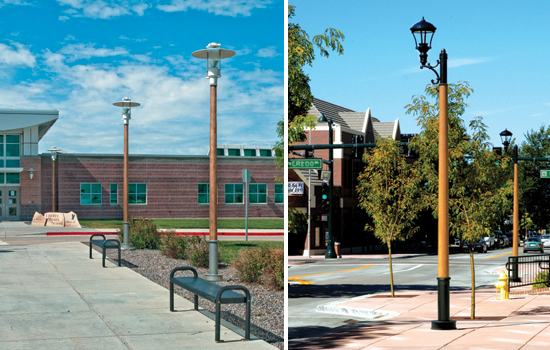Building Green
Laminated Wood Poles
Laminated wood poles are a product that can add aesthetic value as well as sustainability to a project. Laminated wood poles utilize the renewable resource of wood in their composition and hence meet a number of LEED MR criteria both by using a renewable resource and by using less energy than metal or synthetic composites in their manufacture.
Dead Alaskan Yellow Cedar trees or “snags” are used in the fabrication of laminated wood poles. The Alaskan Yellow Cedar tree is a slow growing species that produces a dense growth ring structure, resulting in natural decay resistance to disease and insects, thus requiring no chemical preservatives or treatments. Testing completed by the USDA Forest Service (USDA-FS) in the 1990s on dead “snags” showed that “all wood tested from the dead yellow-cedar trees, regardless of the number of years the trees had been dead, appeared to maintain strength with time. Not one of the snags, in any class, had lost enough strength to prevent it from potentially being used.”2 Many of the harvested Alaskan Yellow Cedar trees have been dead for up to 80 years. The trees were tested for both hardness and bending strength in these USDA-FS tests and the dead trees were found to be as strong as a living tree.
The laminated wood also gains increased strength as a result of the lamination process, making it as durable in exterior conditions as steel or aluminum. Product testing results have shown these laminated wood poles to be stronger than fiberglass and aluminum poles.
The shafts of the laminated wood poles are made of laminated beams that are fabricated from locally sourced materials and components. The tapered shaft comes in lengths up to 25 feet and has an internal wire way. On-site installation is facilitated through a gasketed internal wiring compartment inside a cast aluminum base. The poles can accept any style lighting luminaire fixture or arm via an aluminum tenon assembly bonded at the top of the pole shaft.
In using dead trees from a forest resource, laminated wood poles meet criteria for both a renewable resource and a recycled resource (dead trees); additionally, wood is a carbon absorber rather than a carbon producer. The fabrication process for these laminated wood poles uses less energy than that required for steel, fiberglass, or other metal poles. The laminated wood poles are manufactured in the U.S. of locally sourced materials as all components, except for the trees, are produced within 50 miles of the production facility to minimize the energy consumed during the manufacturing cycle.
Laminated wood poles are typically used where site lighting is an integral part of the landscape design for a project and complementary to the building exterior. While standard metal poles may be used in a parking lot, wood poles are typically used for pedestrian scale lighting, particularly as you approach the entrances and pathways to a building. Laminated wood poles have been used in downtown renewal projects, streetscapes, schools, and retail locations.
Laminated wood poles were an integral component in a concept design for a connector between the Delaware River and Penn Treaty Park in Philadelphia, Pennsylvania. Penn Treaty Park is the site where William Penn signed a treaty with the Lenape tribe. This project is part of a Penn DOT improvement that involves better lighting, access, and streetscaping, as well as the construction of another smaller park. Artist Donald Lipski's design used laminated wood light poles to guide a pedestrian walk to the river. Two light poles will flank the entranceway to the underpass—one with a fiberglass wolf sculpture on top and another with a fiberglass turkey on top. At the other end of the underpass, a series of light poles will lead into the park; in this case each one will stand on the back of a cast bronze turtle. The Lenape origin myths include animals that are associated with its three clans: wolf, turkey, and turtle.
Environmentally responsible alternatives to South American woods include two new products. Both thermally modified North American hardwoods and laminated wood poles fabricated from responsibly harvested Alaskan Yellow Cedar trees meet the criteria for renewable resources and responsible forestry. In addition, thermally modified North American hardwoods are FSC certified.
|
Green Roof Technology
The modern green roof movement began in Germany in the 1980s. These first green roofs used materials that were repurposed from other applications. For example, air barriers or felt from the building envelope were repurposed as water retention layers, and landscape nursery trays were repurposed as green roof plant trays. The use of repurposed materials presented problems, fostering further research to develop technology solely for green roofs.
These new products and systems focus on green roof technologies for stormwater management and fall into two categories of green roof assemblies, manufactured and installed in conjunction with roofing membrane partners. In some cases, a major advantage lies in having a single-source warranty for all components of the green roof.
The two major categories of green roof assemblies are 1) multi-layer or built up and 2) tray-based. The multi-layer green roof assembly is the most flexible in depth and layout. This assembly presents the opportunity for construction of an intensive roof garden due to the potential for greater depth of planting and the ability to easily accommodate organic shapes. Multilayer assemblies can also accommodate the very shallow growing media sometimes used in retrofit applications.
Notice
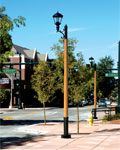
www.cavawood.com
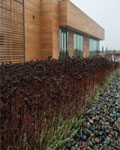
www.columbia-green.com
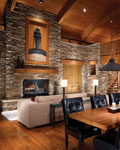
www.eldoradostone.com
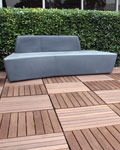
www.tournesolsiteworks.com/boulevard.html





